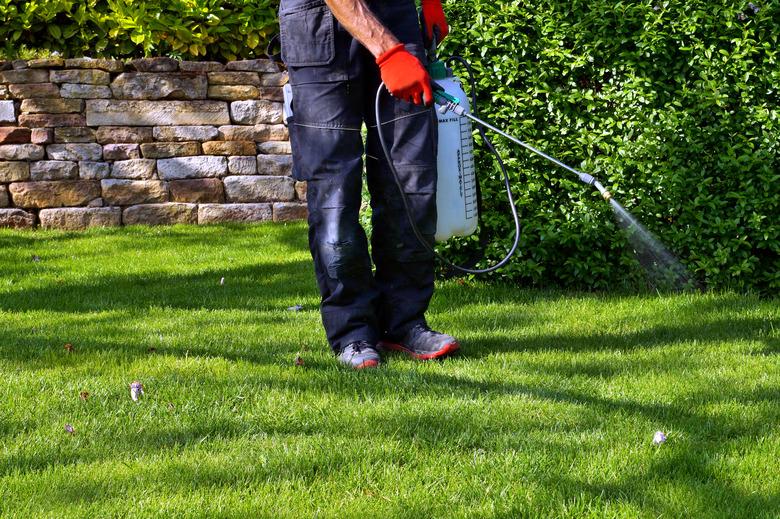Mixing Instructions For Crossbow Herbicide
We may receive a commission on purchases made from links.
Crossbow herbicide is a specialty product formulated to control larger unwanted woody plants, like trees and shrubs. The herbicide also works on broad-leaf weeds that grow in lawns and other parts of the yard. It is not available in some states.
Because you need to mix Crossbow with water to form an emulsion, it must be continuously stirred or agitated to prevent the herbicide and water from separating. Mixing and applying Crossbow herbicide is a relatively simple procedure as long as you take some simple safety precautions and meticulously follow the manufacturer's instructions.
Active Ingredients in Crossbow
Active Ingredients in Crossbow
Crossbow herbicide is a blend of 34 percent 2,4-D, 16 percent triclopyr, and 49 percent other ingredients, which may include emulsifiers or surfactants. Both 2,4-D and triclopyr are virtually nontoxic to bees.
Crossbow is, however, toxic to fish. Therefore, it should never be applied near water sources, like ponds, streams, or other surface water areas, and it should not be allowed to drift toward water areas.
Mixing Crossbow and Water
Mixing Crossbow and Water
Crossbow should be mixed and sprayed from a pump or tank sprayer with at least a 1-gallon reservoir. First, add enough water to the empty reservoir to fill it halfway. Then, measure out the proper amount of Crossbow and add it to the water, based on the desired solution strength:
- 1 percent mixture: Add 1 1/3 ounces of Crossbow to a 1-gallon tank.
- 1.5 percent mixture: Add 1 1/2 ounces of Crossbow to a 1-gallon tank.
- 4 percent mixture: Add 5 1/3 ounces of Crossbow to a 1-gallon tank.
The 4 percent mixture is best for stubborn woody plants, freshly cut stumps, and young trees less than 1 inch in diameter.
If the sprayer has an agitator, start the agitator and finish filling the reservoir with water. Otherwise, mix the herbicide and water by hand, finish filling the tank, and mix again.
When to Apply Crossbow
When to Apply Crossbow
Only two applications of Crossbow are allowed per year on weeds. One application is allowed per year on woody plants. Spray unwanted plants while they are actively growing so the plants will absorb the chemicals and circulate them throughout their systems. Freshly cut stumps may be painted with either undiluted or 4 percent Crossbow at any time of the year. Use a standard paintbrush to apply the product.
Warning
Consult the manufacturer's product instructions for complete mixing and application details and restrictions.
How to Apply Crossbow
How to Apply Crossbow
When spraying Crossbow on annual or perennial broad-leaf weeds or woody plants, set the sprayer to deliver a coarse spray. Larger droplets are less likely to drift on the wind to desirable plants or lawn grasses.
Thoroughly coat the leaves and stems and stop when the herbicide starts to drip from the leaves. If the woody plants have several thick main stems or are taller than 8 feet, paint full-strength Crossbow on the stems, completely encircling the stems with the herbicide.
Crossbow Cautions and Tips
Crossbow Cautions and Tips
Choose a windless day for spraying this herbicide to reduce the risk of it being blown onto other plants. Keep children and pets out of the treated area until the herbicide is completely dry.
Protective eyewear, gloves, a long-sleeved shirt, long pants, shoes, and socks should be worn when spraying any chemical outdoors. Wash your hands thoroughly after using Crossbow and wash protective clothing in a separate load of laundry as soon as possible.
